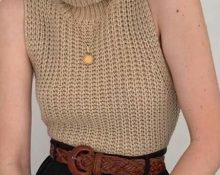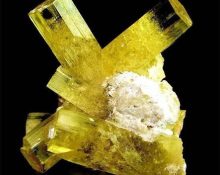Recently, more and more attention has been paid to environmentally friendly and sustainable materials in clothing production. One of these materials is ramie, a natural nettle fabric that is gaining popularity due to its unique properties and environmental friendliness. Let's take a closer look at this material, its composition, characteristics and rules of use.

What is Ramie?
Rami is a fiber obtained from the Boehmeria nivea plant, which belongs to the nettle family. Ramie fabric is considered one of the oldest fibers used by mankind. Its history goes back more than 6 thousand years. Ramie was widespread in East Asia. It was first used to make ropes, nets and light clothing. This fiber was especially highly valued in China. There it became an integral part of traditional textile production. Over time, knowledge about ramie and its processing technology spread to other regions of Asia. And then they were accepted throughout the world.
Interest in ramie has increased in recent decades due to the desire to use environmentally friendly and sustainable materials in the textile industry. Modern technologies have improved the processing of ramie fibers. It has become more accessible for wider use. Ramie is now used in the production of clothing, accessories and home textiles.
Ramie: composition and properties
Ramie fabric is made from natural fibers obtained from the stems of the Boehmeria nivea plant, which belongs to the nettle family. These fibers are characterized by exceptional strength and durability, making them an ideal choice for creating a variety of textiles. Ramie fiber is not only durable, but also has a high ability to absorb moisture, surpassing even cotton in this. This property makes the fabric especially suitable for use in hot and humid climates, providing comfort and freshness when worn.
Among other properties of ramie, its antibacterial and antistatic characteristics stand out. The fabric is not prone to mold and rot, which is especially important in high humidity conditions. Due to its natural resistance to microbes, ramie products remain hygienic and fresh longer than products made from other natural fibers. In addition, ramie does not accumulate static electricity, which makes it comfortable to use and care for, and also prevents the attraction of dust and fibers.
The environmental aspects of ramie production and use also deserve special attention. As a renewable resource, ramie helps reduce the environmental impact of the textile industry while ensuring the production of high-quality, durable materials.Cultivation of ramie plants does not require the use of large amounts of pesticides or artificial irrigation, making it more sustainable than some other fibers.

Benefits and Applications
Ramie fabric has a number of advantages over other natural fibers:
- High strength and wear resistance.
- Ability to absorb moisture well and dry quickly.
- Does not cause allergies and is safe for sensitive skin.
- Environmental friendliness and renewability as a natural resource.
It is important to note that ramie is a fabric with high potential. It is valued in the modern fashion industry and textile production. Ramie is used to create various types of clothing. Designers sew everything: from light summer dresses and blouses to suits and jackets. Ramie is also used in the production of home textiles. It is used for sewing bed linen, tablecloths and towels. There are practically no restrictions for her.
Rules of care
To ensure that ramie products last as long as possible, the following care rules must be followed:
- washing is permissible in cool water using mild detergents;
- Do not use bleaches or harsh chemicals;
- drying is possible only in a straightened form away from direct sunlight;
- Ironing is carried out only at low temperatures on the reverse side of the fabric.
These simple tips will help maintain the quality and appearance of your ramie items for years to come.
Conclusion
Ramie is more than just a fabric, it is a reflection of the commitment to eco-friendliness and sustainability in the textile industry.Due to its outstanding properties and positive impact on the environment, ramie deserves special attention. After all, it can safely be called the material of the future. The use of this unique nettle fabric opens up new horizons for designers and manufacturers. And also for those who strive to create high-quality and environmentally friendly products.


 0
0





